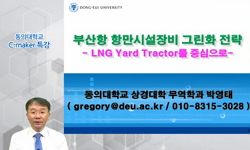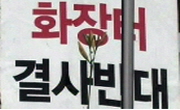이 글은 1969년 전국적인 콜레라 확산 상황에서 부산시 부전역 인근 재개봉관을 중심으로 극장을 둘러싼 위생 담론과 그것의 정치적 효과를 살폈다. 부전역 인근 재개봉관은 미군 부대와 대...
http://chineseinput.net/에서 pinyin(병음)방식으로 중국어를 변환할 수 있습니다.
변환된 중국어를 복사하여 사용하시면 됩니다.
- 中文 을 입력하시려면 zhongwen을 입력하시고 space를누르시면됩니다.
- 北京 을 입력하시려면 beijing을 입력하시고 space를 누르시면 됩니다.
https://www.riss.kr/link?id=A107969967
- 저자
- 발행기관
- 학술지명
- 권호사항
-
발행연도
2021
-
작성언어
Korean
-
주제어
1970년대 ; 부산 ; 콜레라 ; 부전역 ; 재개봉관 ; 위생 ; 혐오 ; 세금 포탈 ; 부랑아 ; 집창촌 ; 1970s ; Busan ; Cholera ; Bujeon Station ; Second-run Movie Theater ; Sanitation ; Disgust ; Tax Evasion ; Vagrant ; Brothel
-
등재정보
KCI등재
-
자료형태
학술저널
- 발행기관 URL
-
수록면
373-400(28쪽)
-
KCI 피인용횟수
0
- DOI식별코드
- 제공처
-
0
상세조회 -
0
다운로드
부가정보
국문 초록 (Abstract)
이러한 상황에서 부전역 앞 성매매 집창촌 인근 재개봉관은 불결과 혐오의 장소로 인식되었다. 이는 수인성 질병과 관련된 부산의 분뇨처리와 식수 관리 등 생활세계 문제와 연관되었다. 재개봉관은 불법과 범죄의 공간이라는 낙인이 찍혔는데, 이는 삼선개헌이라는 국가 폭력을 가리는 구실로 작용하였다. 불법 공간이라는 혐의로부터 일정한 거리를 두었던 개봉관 역시 탈세 혐의를 받는 감시의 대상이었다. 다시 말하여, 1970년대 초반 부산의 재개봉관에 대한 부정적인 의미부여는 정권 유지를 위협하는 잠재적 저항 집단으로서 청소년과 노동자 계층에 대한 통치 전략이었다. 나아가 사회 정화 대상으로서 재개봉관에 관한 명명은 한국전쟁 이후 피란 도시로 변한 부산의 극장 문화를 보여주었다. 1950년대 설립된 아동극장이 전쟁고아와 부랑자 구호를 내세웠다면, 1970년대 초반 재개봉관은 이들에 대한 통제의 담론을 투사하는 곳이었다. 이는 1970년대 중반 형제복지원으로 대표되는 사회적 소수에 대한 국가 폭력의 정당화를 향하고 있었다.
이 글은 1969년 전국적인 콜레라 확산 상황에서 부산시 부전역 인근 재개봉관을 중심으로 극장을 둘러싼 위생 담론과 그것의 정치적 효과를 살폈다. 부전역 인근 재개봉관은 미군 부대와 대규모 시장 그리고 성매매 집창촌 등 물류와 인구 이동이 빈번한 곳에 자리하였다. 하지만 전국적인 재해 발생에도 불구하고 극장 위생 실태조사는 형식적인 절차에 그쳤으며, 삼선개헌과 미군 철수와 같은 사회적 재난 앞에서 뒷전으로 물러났다. 게다가 극장 공간의 위생 문제에 적극적으로 대처할 관련 조항은 공연법에 제시되지 않았다.
이러한 상황에서 부전역 앞 성매매 집창촌 인근 재개봉관은 불결과 혐오의 장소로 인식되었다. 이는 수인성 질병과 관련된 부산의 분뇨처리와 식수 관리 등 생활세계 문제와 연관되었다. 재개봉관은 불법과 범죄의 공간이라는 낙인이 찍혔는데, 이는 삼선개헌이라는 국가 폭력을 가리는 구실로 작용하였다. 불법 공간이라는 혐의로부터 일정한 거리를 두었던 개봉관 역시 탈세 혐의를 받는 감시의 대상이었다. 다시 말하여, 1970년대 초반 부산의 재개봉관에 대한 부정적인 의미부여는 정권 유지를 위협하는 잠재적 저항 집단으로서 청소년과 노동자 계층에 대한 통치 전략이었다. 나아가 사회 정화 대상으로서 재개봉관에 관한 명명은 한국전쟁 이후 피란 도시로 변한 부산의 극장 문화를 보여주었다. 1950년대 설립된 아동극장이 전쟁고아와 부랑자 구호를 내세웠다면, 1970년대 초반 재개봉관은 이들에 대한 통제의 담론을 투사하는 곳이었다. 이는 1970년대 중반 형제복지원으로 대표되는 사회적 소수에 대한 국가 폭력의 정당화를 향하고 있었다.
다국어 초록 (Multilingual Abstract)
These circumstances led to a perception of second-run movie theaters near the brothels in front of Bujeon Station as places reeking of filth and squalor. Hence, they were dubbed the “honey bucket.” This state of affairs in Busan was an outcome of sanitation and hygiene issues, such as poor waste disposal mechanisms and lack of clean drinking water, which, in turn, spread water-borne diseases.
Second-run movie theaters were also stigmatized as a space of illegality and crime, which served as an excuse for state violence in the name of constitutional amendment and extended the Park Chung-hee government’s term in office. The first-run movie theaters, which remained relatively free of allegations as a place for illicit activities, also came under scrutiny for tax evasion. In other words, the negative connotation attached to Busan’s second-run movie theaters in the early 1970s was in fact a government strategy to target the youth and working class, which was a potential resistance group that threatened the regime’s survival.
Furthermore, designating second-run movie theaters as targets for social purification revealed the cultural landscape surrounding movie theaters in Busan, which had transformed into a refugee city following the Korean War. While the children’s theater was established in the 1950s to promote relief for war orphans and vagrants, second-run movie theaters, in the early 1970s, became places where the state could publicize the discourse of filth and exert control over local residents. This move was aimed at justifying state violence against the social minority represented by the case of the Brotherhood Welfare Center in Busan.
This article examines the sanitation discourse surrounding the second-run movie theaters near Bujeon Station, Busan, in the context of a nationwide cholera outbreak in 1969, and its political implications. Second-run movie theaters proliferated in the...
This article examines the sanitation discourse surrounding the second-run movie theaters near Bujeon Station, Busan, in the context of a nationwide cholera outbreak in 1969, and its political implications. Second-run movie theaters proliferated in the crowded areas near Bujeon Station that housed US military bases, large markets, and brothels. Despite the rapid outbreak and spread of cholera, administrative authorities were perfunctory in implementing measures for disease surveillance and quarantine for movie theatres because attention was diverted more toward political issues such as the constitutional amendment for dictatorship and the withdrawal of the US military forces from Korea. Moreover, the Performance Act of that time did not contain relevant provisions to address the issue of movie theater sanitation.
These circumstances led to a perception of second-run movie theaters near the brothels in front of Bujeon Station as places reeking of filth and squalor. Hence, they were dubbed the “honey bucket.” This state of affairs in Busan was an outcome of sanitation and hygiene issues, such as poor waste disposal mechanisms and lack of clean drinking water, which, in turn, spread water-borne diseases.
Second-run movie theaters were also stigmatized as a space of illegality and crime, which served as an excuse for state violence in the name of constitutional amendment and extended the Park Chung-hee government’s term in office. The first-run movie theaters, which remained relatively free of allegations as a place for illicit activities, also came under scrutiny for tax evasion. In other words, the negative connotation attached to Busan’s second-run movie theaters in the early 1970s was in fact a government strategy to target the youth and working class, which was a potential resistance group that threatened the regime’s survival.
Furthermore, designating second-run movie theaters as targets for social purification revealed the cultural landscape surrounding movie theaters in Busan, which had transformed into a refugee city following the Korean War. While the children’s theater was established in the 1950s to promote relief for war orphans and vagrants, second-run movie theaters, in the early 1970s, became places where the state could publicize the discourse of filth and exert control over local residents. This move was aimed at justifying state violence against the social minority represented by the case of the Brotherhood Welfare Center in Busan.
목차 (Table of Contents)
- 국문요약
- 1. 들어가며
- 2. 부전역 인근 지역의 이중적 성격과 방역의 실패
- 3. 재개봉관에 대한 ‘똥통’ 담론: 불결과 혐오의 공간
- 4. 방역보다 중요한 개봉관의 세금 포탈 문제
- 국문요약
- 1. 들어가며
- 2. 부전역 인근 지역의 이중적 성격과 방역의 실패
- 3. 재개봉관에 대한 ‘똥통’ 담론: 불결과 혐오의 공간
- 4. 방역보다 중요한 개봉관의 세금 포탈 문제
- 5. 정화의 대상으로서 재개봉관
- 6. 나가며
- 참고문헌
- Abstract
참고문헌 (Reference)
1 이길성, "홍콩무협영화 수용을 통해 본 1970년대 하위문화 연구-하번관 관람객의 감성을 중심으로" 대중서사학회 23 (23): 377-414, 2017
2 위경혜, "한국전쟁과 부산의 극장 문화" 영화연구소 14 (14): 293-319, 2021
3 영화진흥공사, "한국영화자료편람: 초창기-1976년" 영화진흥공사 1977
4 게오르그 짐멜, "짐멜의 모더니티 읽기" 새물결 2005
5 위경혜, "인천의 극장 문화" 한국극예술학회 (53) : 45-88, 2016
6 홍성철, "유곽의 역사" 페이퍼로드 2007
7 이영재, "아시아적 신체 : 냉전 한국⋅홍콩⋅일본의 트랜스/내셔널 액션영화" 소명 2019
8 정판수, "아버지의 자전거" 에세이 2010
9 형제복지원구술프로젝트, "숫자가 된 사람들" 오월의 봄 2015
10 "손길(1942년생, 캠프 하야리아 카투사 KATUSA)의 구술. 구술 일자 2020년 7월15일"
1 이길성, "홍콩무협영화 수용을 통해 본 1970년대 하위문화 연구-하번관 관람객의 감성을 중심으로" 대중서사학회 23 (23): 377-414, 2017
2 위경혜, "한국전쟁과 부산의 극장 문화" 영화연구소 14 (14): 293-319, 2021
3 영화진흥공사, "한국영화자료편람: 초창기-1976년" 영화진흥공사 1977
4 게오르그 짐멜, "짐멜의 모더니티 읽기" 새물결 2005
5 위경혜, "인천의 극장 문화" 한국극예술학회 (53) : 45-88, 2016
6 홍성철, "유곽의 역사" 페이퍼로드 2007
7 이영재, "아시아적 신체 : 냉전 한국⋅홍콩⋅일본의 트랜스/내셔널 액션영화" 소명 2019
8 정판수, "아버지의 자전거" 에세이 2010
9 형제복지원구술프로젝트, "숫자가 된 사람들" 오월의 봄 2015
10 "손길(1942년생, 캠프 하야리아 카투사 KATUSA)의 구술. 구술 일자 2020년 7월15일"
11 정규한, "부산지역 의료 130년사" 연문씨앤피 2008
12 부산일보사, "부산일보"
13 정영란, "부산시의 분뇨처리 : 정책, 행정 그리고 130년의 연대기" 부산환경공단 2013
14 홍영철, "부산극장사" 부산포 2014
15 안미정, "부산 미군 하야리아부대의 공간적 변용과 의미" 역사문화학회 16 (16): 265-293, 2013
16 보건사회부, "부녀행정 40년사" 보건사회부 1987
17 박훈하, "문학적 기록의 허구성과 그 무의식적 부재 − 60년대 극장과 영화에 대한 기억" 인문과학연구소 25 : 131-150, 2011
18 유현, "리틀아메리카에서 부산시민공원으로-캠프 하야리아를 둘러싼 기억과 시선들-" 부산광역시사편찬위원회 (38) : 161-203, 2019
19 대한일보사, "대한일보"
20 임시수도기념관, "낯선 이방인의 땅 캠프 하야리아" 임시수도기념관 2015
21 "김용환(1933년생, 부산시 필름 배급 및 극장 입회 담당)의 구술. 구술 일자 2019년 4월 18일"
22 위경혜, "극장 문화의 지역성 ―한국전쟁 이후 대전을 중심으로" 인문학연구소 36 (36): 91-124, 2017
23 "국립영화제작소"
24 "국가법령정보센터"
25 부산진문화원, "고무신에서 나이키까지 : 부산진구 신발이야기" 부산진문화원 2018
26 김원, "60~70년대 기지촌 게토화의 변곡점 - 특정지역, 한미친선협의회 그리고 기지촌 정화운동" 역사문제연구소 (112) : 153-185, 2015
27 정호순, "1970년대 극장과 연극문화" 한국극예술학회 (26) : 191-229, 2007
28 김승희, "1969년 한국에서 발생한 콜레라를 통해서 본 생명권력과 그 한계" 동양사회사상학회 18 (18): 217-248, 2015
29 이길성, "1950년대 서울의 재개봉관 연구 - 명동극장을 중심으로" 한국문학연구학회 (74) : 285-309, 2021
동일학술지(권/호) 다른 논문
-
대학 교육의 현재와 비대면 교육의 방향 연구: 영화제작 실기 교육 중심으로
- 한국영화학회
- 김진욱(Kim, Jin-Wook)
- 2021
- KCI등재
-
아보우나따라의 긴급영화: 긴급영화의 세 가지 유형과 주요 작품 분석
- 한국영화학회
- 이도훈(Lee, Do Hoon)
- 2021
- KCI등재
-
다르덴 형제의 영화적 현실 공간, ‘노동의 장’에 나타난 변증법적 헤게모니: <로제타>와 <내일을 위한 시간>을 중심으로
- 한국영화학회
- 김소영(Soyoung Kim)
- 2021
- KCI등재
-
오즈 야스지로의 ‘일본적인 것’의 전후(戰後)적 의미: 메타비평의 시각에서
- 한국영화학회
- 구혜원(KOO Hyewon)
- 2021
- KCI등재
분석정보
인용정보 인용지수 설명보기
학술지 이력
| 연월일 | 이력구분 | 이력상세 | 등재구분 |
|---|---|---|---|
| 2026 | 평가예정 | 재인증평가 신청대상 (재인증) | |
| 2020-01-01 | 평가 | 등재학술지 유지 (재인증) |  |
| 2017-09-22 | 학회명변경 | 영문명 : Film Studies Association Of Korea (Fisak) -> Korean Cinema Association (KCA) |  |
| 2017-01-01 | 평가 | 등재학술지 유지 (계속평가) |  |
| 2013-01-01 | 평가 | 등재 1차 FAIL (등재유지) |  |
| 2010-01-01 | 평가 | 등재학술지 유지 (등재유지) |  |
| 2007-01-01 | 평가 | 등재학술지 선정 (등재후보2차) |  |
| 2006-04-09 | 학술지등록 | 한글명 : 영화연구외국어명 : Film Studies |  |
| 2006-01-01 | 평가 | 등재후보 1차 PASS (등재후보1차) |  |
| 2004-01-01 | 평가 | 등재후보학술지 선정 (신규평가) |  |
학술지 인용정보
| 기준연도 | WOS-KCI 통합IF(2년) | KCIF(2년) | KCIF(3년) |
|---|---|---|---|
| 2016 | 0.58 | 0.58 | 0.59 |
| KCIF(4년) | KCIF(5년) | 중심성지수(3년) | 즉시성지수 |
| 0.58 | 0.55 | 1.055 | 0.29 |





 KCI
KCI DBpia
DBpia






